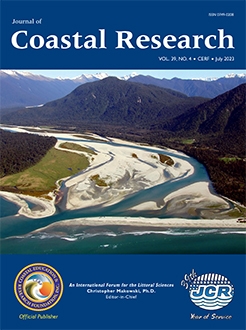Shiflett, S.A. and Backstrom, J.T., 2023. Impacts of Hurricane Isaias (2020) on geomorphology and vegetation communities of natural and planted dunes in North Carolina. Journal of Coastal Research, 39(4), 587–609. Charlotte (North Carolina), ISSN 0749-0208.
Coastal dunes serve a crucial role in reducing inland flooding, slowing shoreline erosion, and acting as a physical barrier to protect developed coastal communities from storm-related impacts. Dunes also provide critical habitat for several shoreline species. High magnitude storms such as hurricanes and nor'easters can have profound and long-lasting impacts on low-lying coastal areas, ranging from minor and temporary beach erosion to complete devastation of entire barrier island systems. This study documents direct impacts of Category 1 Hurricane Isaias (2020), one of the strongest tropical storms to directly hit the region, on coastal dune geomorphology and vegetation of Holden Beach, a south-facing barrier island located in SE North Carolina. Impacts were investigated using a combination of pre- and poststorm real-time kinematic dune profiles, vegetation cover and type transects, prestorm high-resolution drone imagery, and poststorm National Oceanic and Atmospheric Administration aerial imagery. Dominant geomorphological impacts included a variety of depositional and erosional effects, which were more prominent along artificially renourished and planted coastal segments compared to adjacent natural dune systems. Geomorphological changes subsequently reduced poststorm dune vegetation density. Yet, reduced impact on vegetation species abundance (i.e. stem density) was evident at a wider, stabilized dune area, which lacked human management, compared with narrower, less mature, and actively managed (i.e. fenced and/or planted) dune areas. Dune grasses were more resilient to Hurricane Isaias than forbs; however, several volunteer forb species, noted for dune stabilization abilities, were present at unmanaged dunes. Results indicate planting a diverse palette of native coastal species, which when co-occurring fill a variety of functional roles, will increase dune resilience to tropical storms. This study provides important insights into optimizing dune management strategies for developed barrier islands and other low-lying temperate coastal regions, which may be susceptible to ongoing sea-level rise and high-energy storm events.





